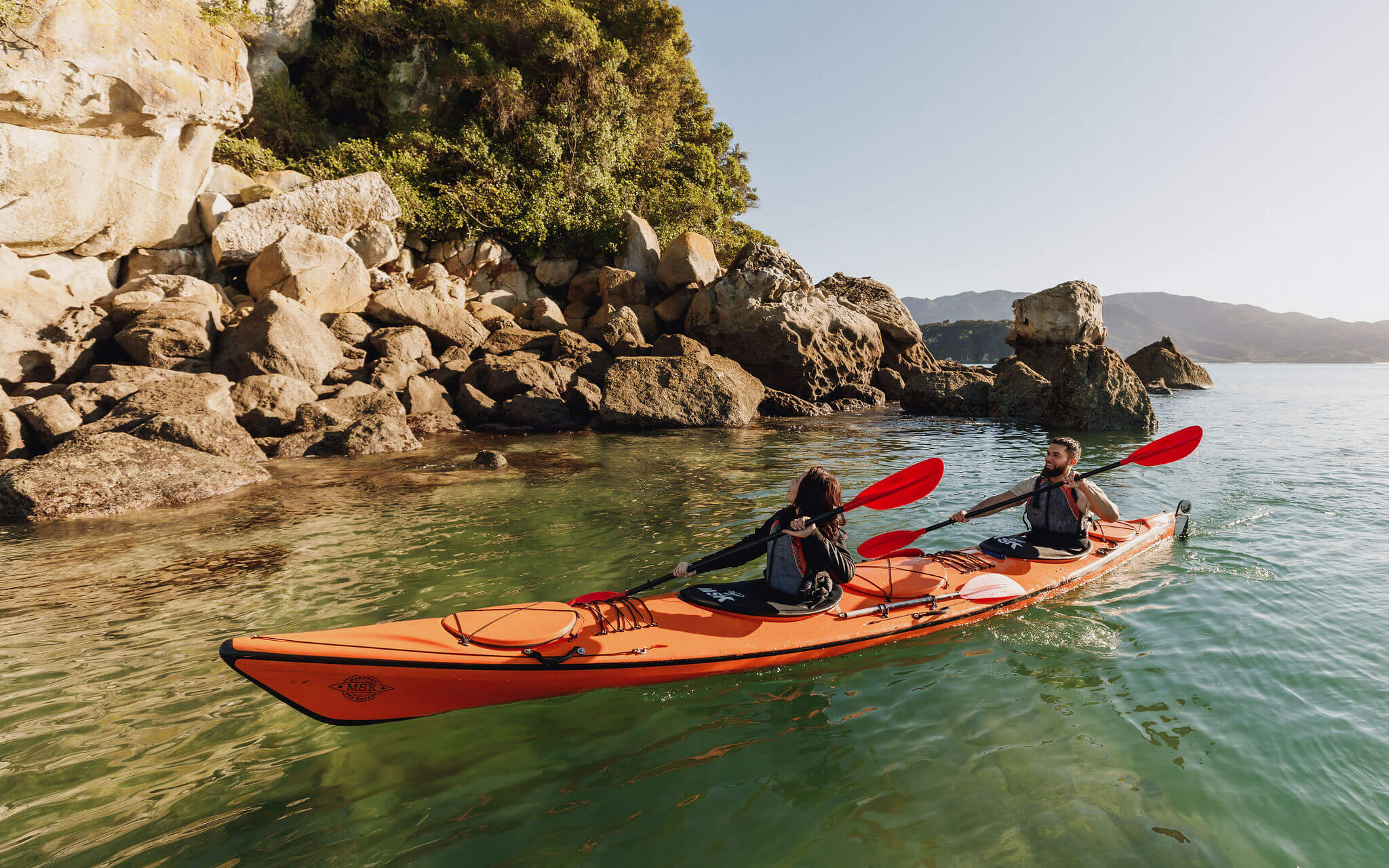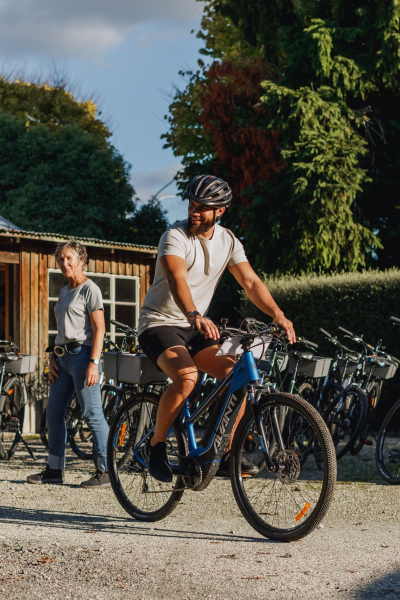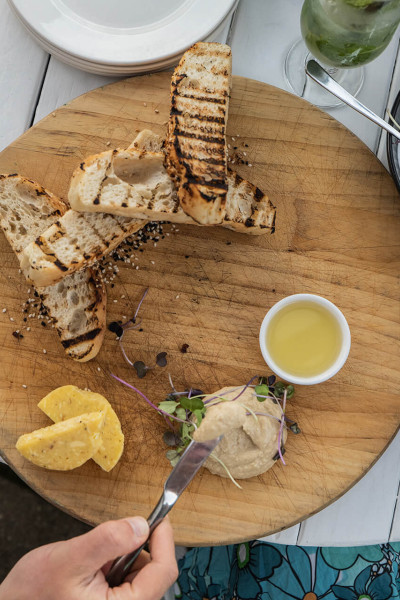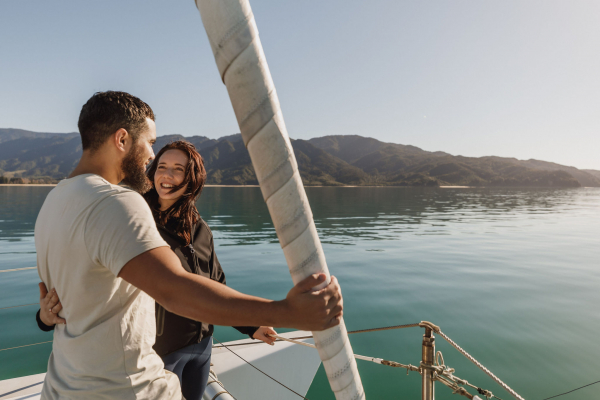
The first of its kind in New Zealand, this four-day light footprint itinerary combines incredible experiences, delectable cuisine, spectacular scenery, and comfortable accommodation in one place.

Highlights
Abel Tasman National Park
Tasman's Great Taste Trail
Local breweries and wineries


Your holiday begins with an arrival at the award-winning Nelson Airport, a striking sculptural landmark built with locally sourced timbers and using passive design principles.
If you fancy a cycling adventure from day one, The Gentle Cycling Company can combine e-bikes with sage advice as you set off on Tasman's Great Taste Trail in search of chocolate-box scenery and wonderful new flavours. Or join Wine Art & Wilderness on one of their guided tours around wineries, art galleries or the region’s best nature spots. After a day out exploring, pick up a hybrid car from New Zealand Rent-A-Car or Hertz, and head into Nelson City for the evening.
The ideal place to toast your holiday and plot your next day’s experiences is The Free House, a converted church and the first climate-positive pub in the country. Here, you’ll find a wide range of delicious craft brews on tap (including the much-loved Mussel Inn beverages), and they even let you bring along your own food! Stocking up on picnic provisions for a night in a pub-church requires a pit stop at Fresh Choice Nelson, a supermarket that specialises in local produce. Look for their ‘less than 200km’ labels to help with your decision-making, and don’t forget to include some goodies from Yum Granola and the Chia Sisters.
At the end of the day, sleeping with a clear conscience is easy in a private room with an ensuite at the centrally located YHA Nelson by Accents, right on the doorstep of the Nelson Saturday Market.


This morning set off to Mārahau for a full-day trip with Abel Tasman Aqua Taxi and Mārahau Sea Kayaks, stopping off to grab a coffee from Celcius Coffee in Motueka. They offer boating, hiking, and kayaking trips in the Abel Tasman National Park, all of which have been measured and are certified as zero carbon. You could choose a Fantasy Island guided trip, taking in the pristine golden coastline to Adele Island and the happy chatter from the abundant birdlife – a direct result of an initiative by local tourism operators called The Abel Tasman Birdsong Trust. The seals lolling on nearby rocks are also worth a visit.
Celebrate a day in paradise at the relaxed waterfront beer garden at Hooked, another local favourite that has measured and offset its operational emissions.
Choices for guilt-free overnight accommodation in Mārahau are abundant. There are modern and stylish rooms set amongst beautiful native grounds at Abel Tasman Lodge, with an EV station for charging your hybrid vehicle. Abel Tasman Ocean View Chalets are ideally situated on the doorstep of the national park, where you can make the most of the stunning seaside views from your private balcony. Or, if classic kiwi camping in the village is what you’re looking for, look no further than Marahau Beach Camp.


Do you feel like an exhilarating adventure or a soak-up-the-scene cruise along an unspoiled, glistening golden coastline? A daredevil’s yes sees you join Abel Tasman Canyons as you zipline, jump, slide and abseil down the Torrent River's pristine waterfalls in the national park's depths. If a more relaxing experience is more your style, you’re all aboard Abel Tasman Sailing Adventures for a full-day on the water or choose a combo that includes seal-spotting and a bit of landlubber time exploring inside the park.


After another restful night in Mārahau, it’s just a short drive to Motueka where you can get a bird’s eye view of the region with Skydive Abel Tasman. When you’re 20,000 feet up, nothing obstructs your views of the Abel Tasman coastline or the rugged mountains of Kahurangi National Park, an unforgettable almost-end to your trip. Touch down and head back toward Nelson Airport, stopping at a roadside stall for some fresh fruit from the home of New Zealand’s horticulture. The region is home to Pic’s Peanut Butter World. The memory of roasting peanuts on their factory tour will stay with you long after you’ve gone, jogged easily every time you open a jar of Pic’s Peanut Butter to slather on your toast.
Whether you’re visiting for a day, four or more, there are plenty of choices to shape a light-footprint holiday in Nelson Tasman. You don’t have to deny yourself anything – travelling responsibly doesn’t mean missing out on delectable cuisine, extraordinary experiences, spectacular scenery and comfortable accommodation. As is often the case, life isn’t about making big changes, but a few small steps can go a long way.